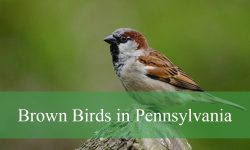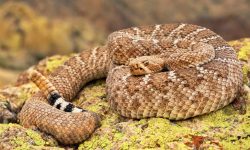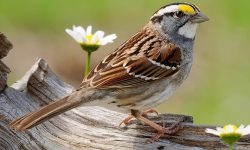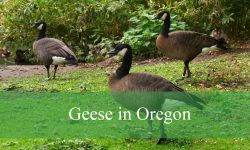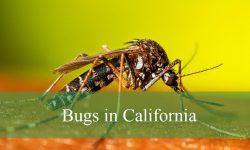There are many species of black and white butterflies, and the exact number can vary depending on factors like region and classification. Butterflies come in a wide range of colors and patterns, and black and white is a common coloration in many species. Some well-known black and white butterfly species include the Cabbage White (Pieris rapae), Checkered White (Pontia protodice), and the Black Swallowtail (Papilio polyxenes), among others.
Checkered White (Pontia protodice)
The southernmost regions of the United States and some of the northernmost regions of Mexico are where Pontia protodice is most frequently found. The species is sometimes found in northern U.S. states and southern Canada. Although populations have gotten more erratic immediately east of the Appalachians, it is not present in the Pacific Northwest or New England. In contrast to early in the season, late summer and autumn are when Pontia protodice are most prevalent.
The female has more black and gray markings on the upperside of her wings than the male does. Widespread veins of yellow-brown color run along the underside of the hindwings. 1.25–1.75 inches (3.2–4.4 cm) is the wingspan of this bird. The egg is orange in color when it is in pre-adult stage, and the larvae are gray to bluish green with a yellow dorsal, lateral, and sublateral stripe that are black dotted. The pupa, which is a wintertime stage, can be blue-gray or cream in hue.
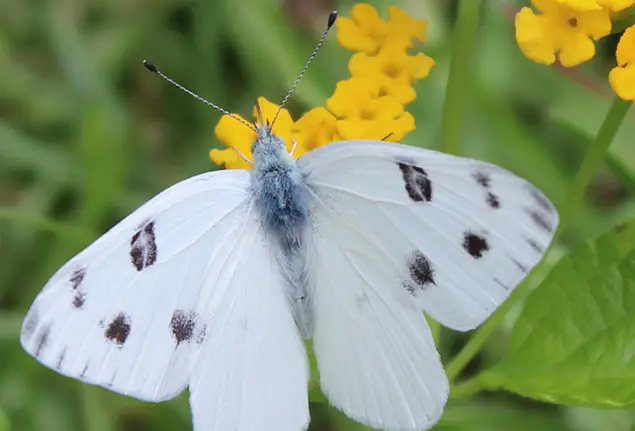
Black Swallowtail (Papilio polyxenes)
The butterfly Papilio polyxenes, sometimes known as the American swallowtail, parsnip swallowtail, or (eastern) black swallowtail, is widespread across much of North America. Oklahoma, Michigan, and New Jersey all have it as their state butterfly. Papilio joanae, a species that has striking similarities to P. polyxenes and is found in the Ozark Mountains, appears to be more closely linked to Papilio machaon. The species bears the name Polyxena after the youngest daughter of King Priam of Troy in Greek mythology. Because it feeds on parsley, the caterpillar’s name is “parsley worm.”
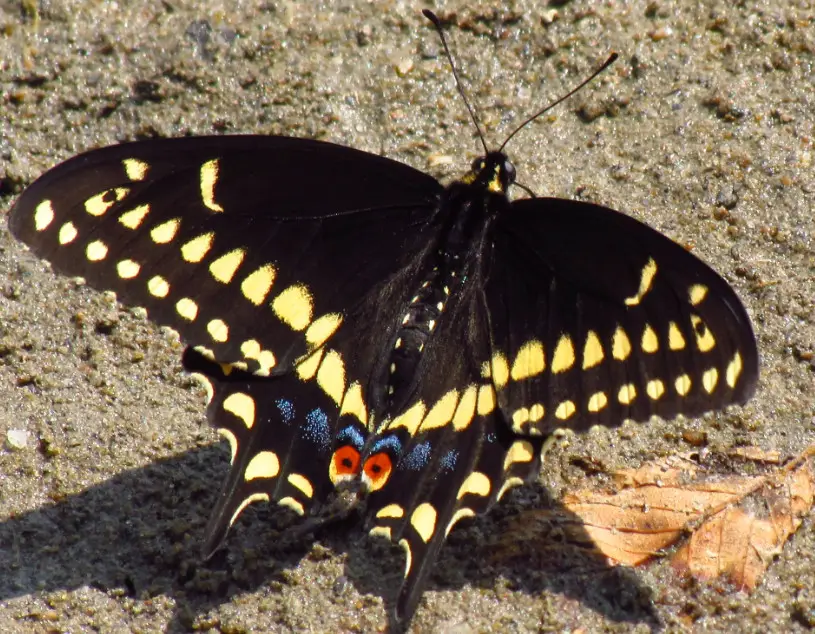
Arctic White
In Alaska and northwest Canada, the arctic white species of butterfly is widespread. One of the less frequent varieties of butterflies that can be found in frigid climates is this one. With a black body and black wing veins, their wings appear predominantly white from above. 1.3 to 1.7 inches is the size of their wingspan.
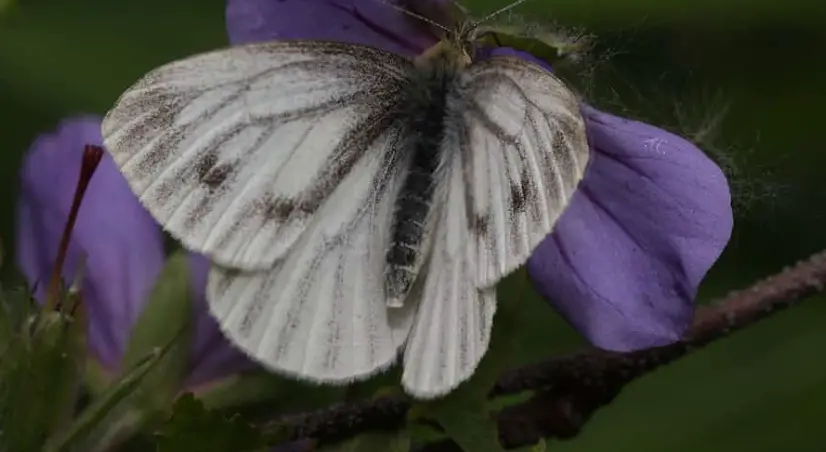
Chiricahua White
Mexico as well as a few southwest U.S. states are home to the Chiricahua white, commonly known as the Mexican white pine butterfly. Their forewing margins and wing veins are black, while their open wings are white. This species only has black and white males; the females are black and orange. They have wingspan ranges between 1.75 and 2.25 inches.
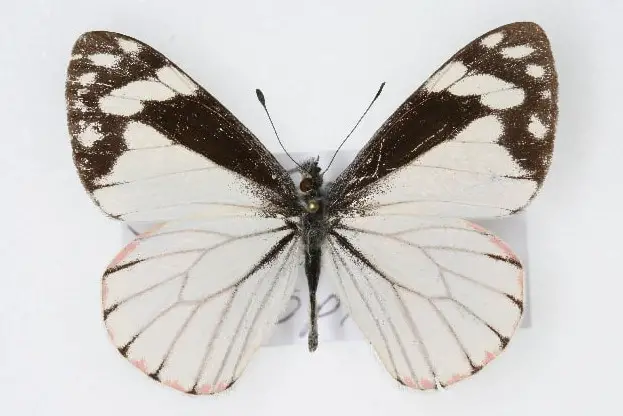
Desert Marble
The desert marble can be found in sections of northern Mexico and the western half of the United States. They have gray bodies and white open wings with a few black spots closer to the borders of their forewings. About 1.5 inches is the size of their wings.
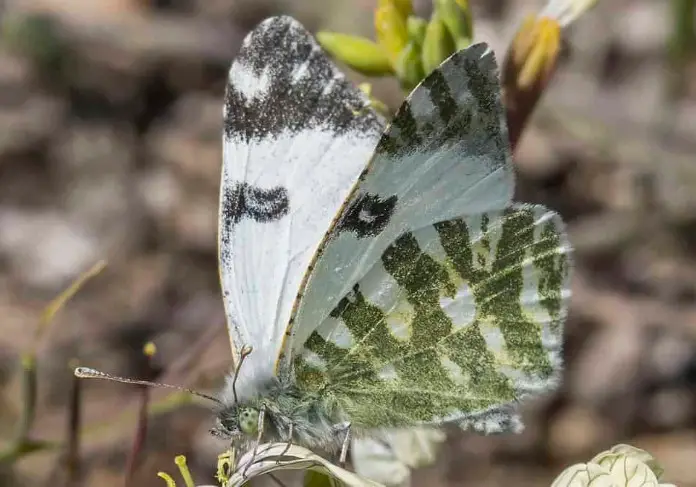
Antiochus Longwing
These butterflies can be found in South American countries including Panama and the Amazon. Their forewings are black with two broad white lines running across them. They have two-inch wingspan.
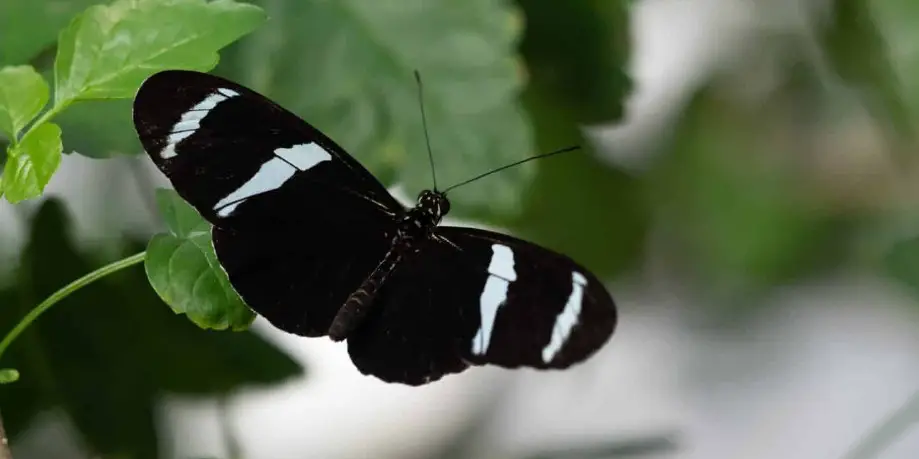
Pine White
The western United States and southwest Canada are home to pine white or pine butterflies. Each one of them is white with black wing veins and wing tips. As their name suggests, they frequently reside in pine forests. Their wingspan is between 1.75 and 2.25 inches.
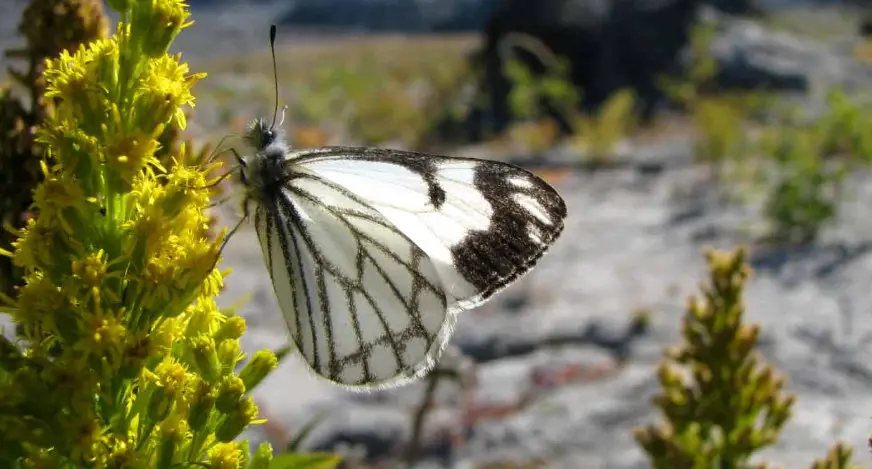
Common Sailor
In India and other southeast Asian nations, the common sailor species is found. They have black skin with white patches and stripes. Their 2 inch average wingspan is what they have.
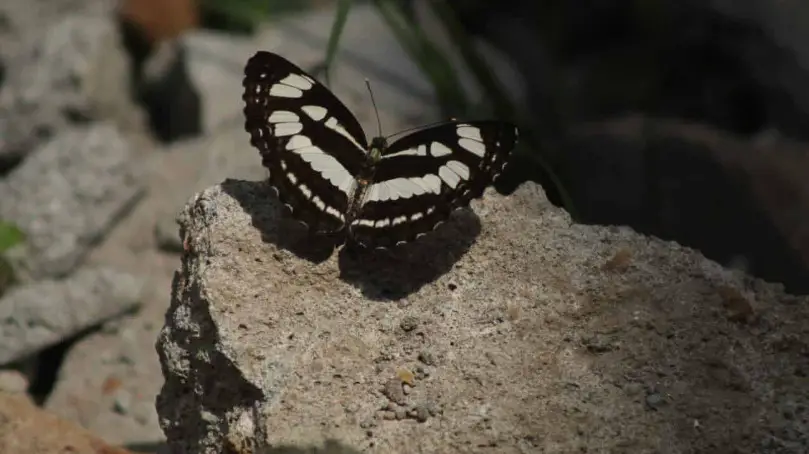
Tree-Nymph from Malabar
Throughout India, one can find this huge species of butterfly. They have many numerous medium-sized black patches, together with white wings with black wing veins. Between 4.7 and 6.1 inches are their wingspan.
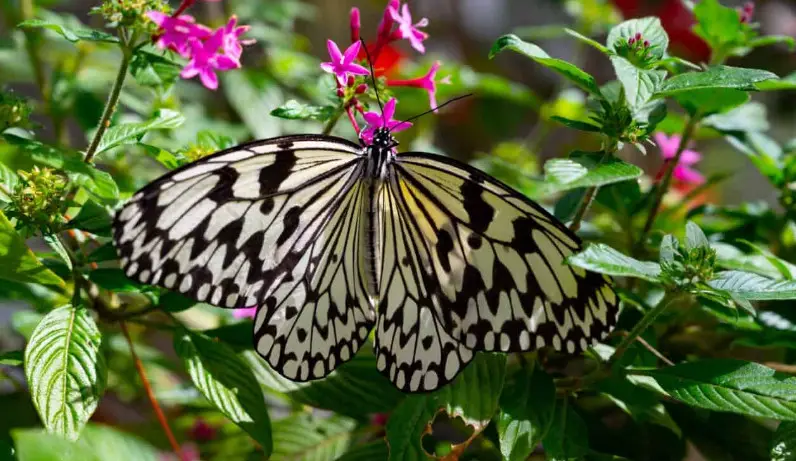
Clodius Parnassian
These butterflies can be found throughout western North America and southwestern Canada. They have mostly white wings that have gray and black tinting all over them. Additionally, each wing has two tiny red dots. With a wing span of 2 to 2.5 inches, Clodius parnassian butterflies are of middle size.
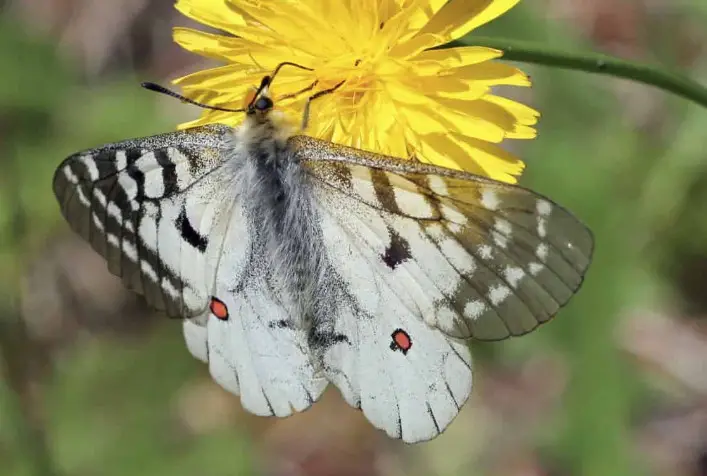
Elbowed Pierrot
The elbowed pierrot species, like the common pierrot, is widespread throughout Asia, with the majority being in India. They appear predominantly black from above with a broad white median band, but when viewed from the side, they appear white with sizable black spots. Their wingspan is around 0.8 inches.
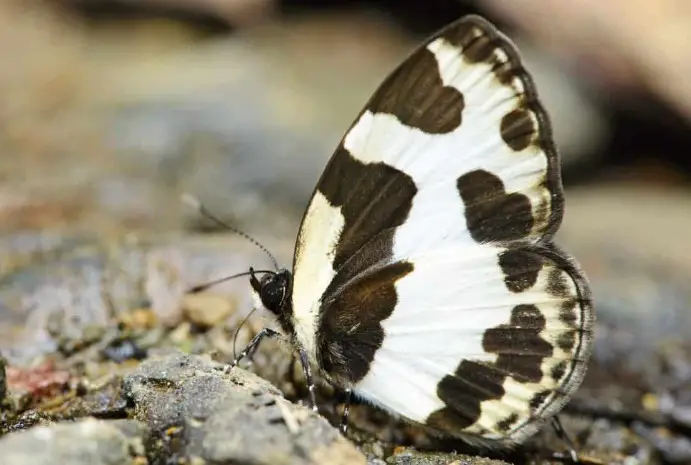
Common Pierrot
Asia is home to the common pierrot butterfly, which is primarily found in India. These white butterflies have numerous black dots on them that resemble cheetah prints. Their wings typically have a black outline. With an average wing span of 0.9 to 1.3 inches, they are tiny butterflies.
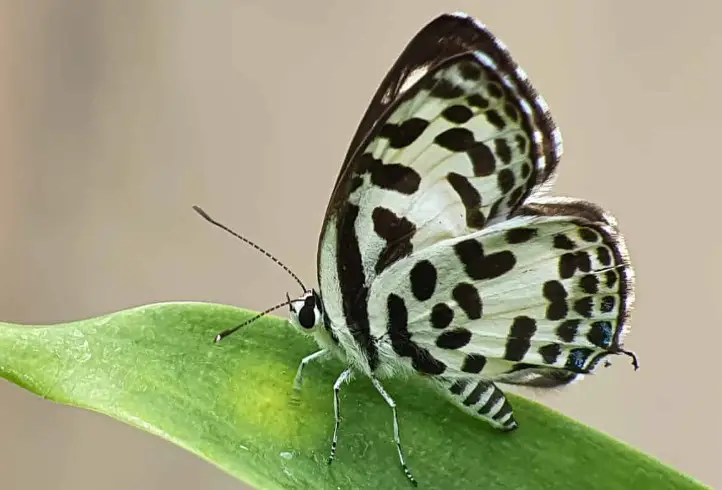
Weidemeyer’s Admiral
Over the western part of North America, Weidemeyer’s admiral butterflies can be found. The white median line that runs horizontally across their bodies and their strong black colour make them easily identifiable. Along the underside of each of their wings are white dots. Wingspan: 2.25 to 3.75 inches for these insects.
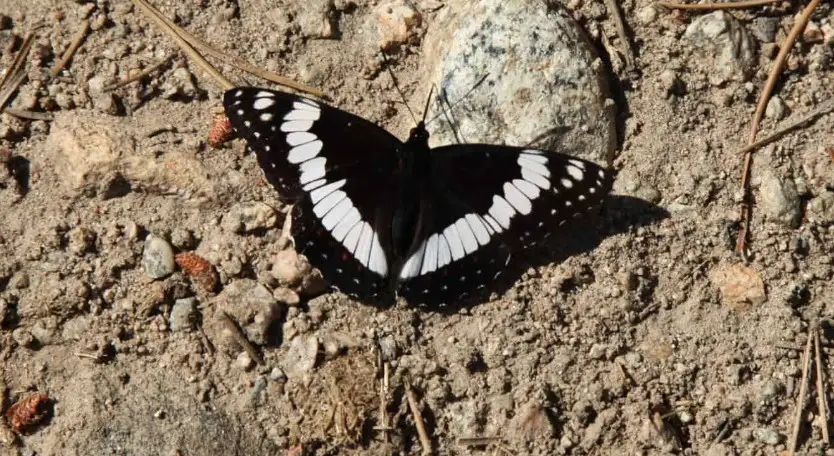
Margined White
There are margined white butterflies all over western North America, from New Mexico to Alaska and through Canada. Their wings feature black veins and white bodies. Their wingspan ranges from 1.5 to 2.25 inches.
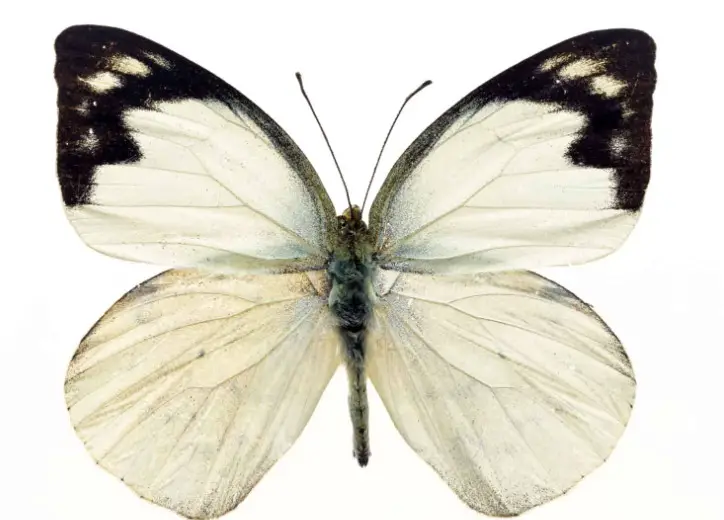
White Morpho
Both Mexico and Central America are home to white morpho butterflies. They have mostly white wings that have a few tiny black or brown markings scattered over them. These huge butterflies, whose wingspans range from 4.5 to 5.75 inches, are extremely unusual.
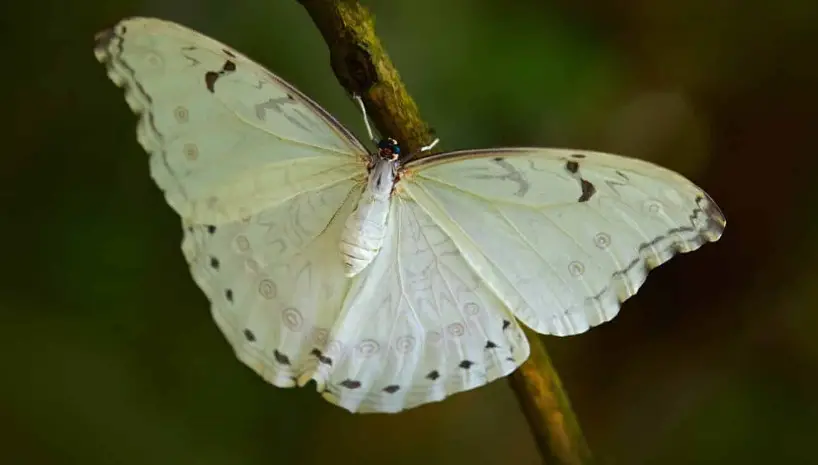
Grizzled Skipper
In portions of England and Wales, the grizzled skipper, a native of Europe, can be seen frequently. The checkerboard pattern on these butterflies’ black wings is white. Their average wingspan is only 1 inch, making them a tiny species.
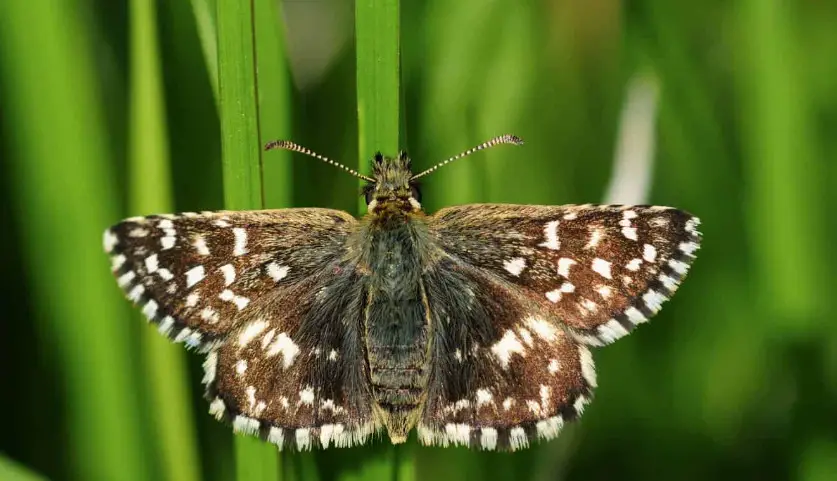
Pale Swallowtail
Western North America is home to the pale swallowtail, which is typically seen in California. Their wings are covered with stripes that alternate between black and white. They resemble the zebra swallowtail in appearance but are more white in hue. Additionally, they have two lengthy tails that start at the base of their rear wings. The wingspan of pale swallowtails is from 2.5 to 3.5 inches.
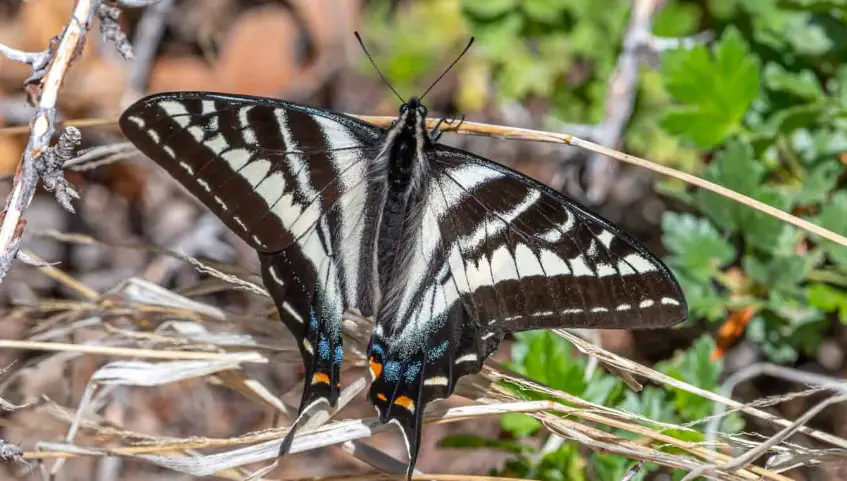
White Admiral
The majority of North America and all of Europe are home to white admiral butterflies. They enjoy the sun and are frequently spotted taking a nap on the topmost branches of trees. With an average wing span of three inches, white admirals are medium-sized to giant butterflies. Their black bodies and wings, which feature a wide white stripe running horizontally, make them easily recognizable.
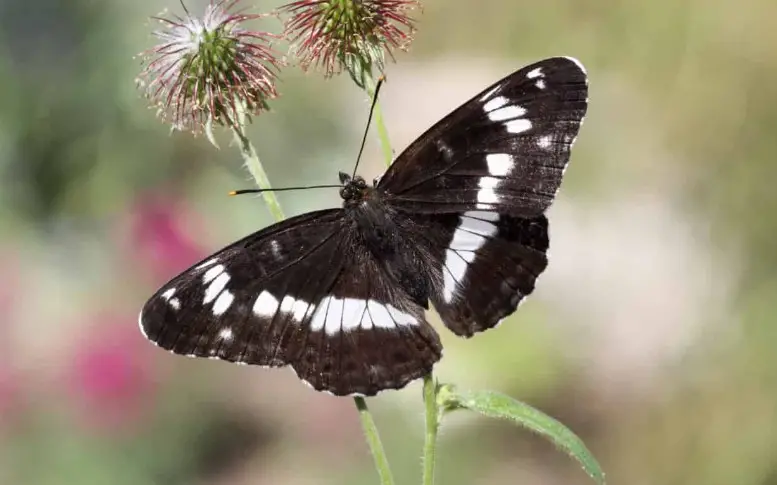
Marbled White
The black marbled white species have several, sizable white spots on them, as well as a white wing outline. Females might be brown, but males tend to be a darker shade of black. This species stands out because it favors purple blossoms. As a result, they frequent homes and gardens frequently. With a wingspan between 2.1 and 2.3 inches, marbled white butterflies are of a medium size.
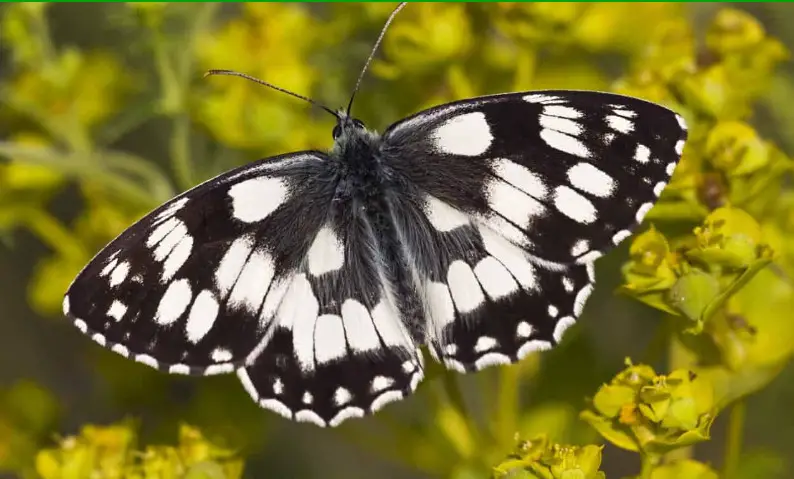
Zebra Longwing
Zebra swallowtail butterflies and zebra longwing butterflies look extremely similar. Longwing butterflies have a more distinct appearance than zebras, while having a pattern of black, white, and occasionally yellow stripes. While the colors of the zebra swallowtail blend together, those of the zebra longwing have distinct edges and lines. Various regions of the United States, including Texas and Florida, as well as Mexico and Central America are home to this species. Being a species of butterfly that lives for months as opposed to only a few weeks, they lay eggs. 2.8 to 3.9 inches is the size of their wingspan.
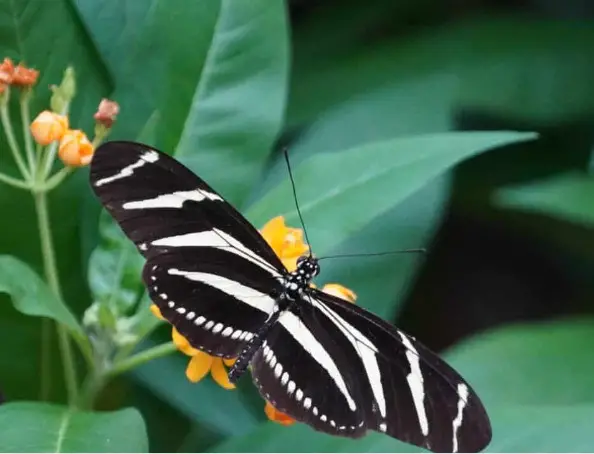
Zebra Swallowtail
The eastern United States and Canada are home to this species of butterfly. Zebra swallowtails have vertically striped bodies, similar to a zebra, that are completely black and white. Additionally, they have a little red dot just before their tails at the base of their hindwings. They have long, sword-like tails. With an average wingspan of 2.5 to 4.1 inches, these are big butterflies.
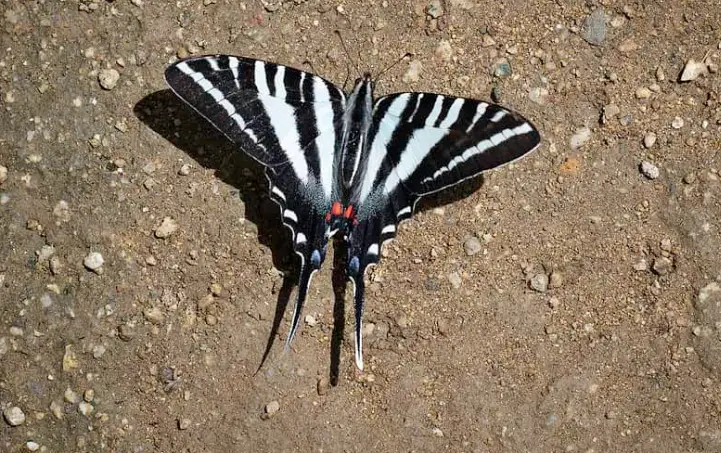
Cabbage White
In addition to living in North America, where they were imported around 1860, the cabbage white butterfly species has its origins in Eurasia and Africa. This species’ caterpillars live and eat only on cruciferous plants like kale, cabbage, broccoli, and cauliflower. Because of this, before they mature and turn into butterflies, some people consider their larvae to be a pest.
A wingspan of 1.3 to 1.9 inches describes them as medium-sized. Butterflies known as cabbage whites have all-white or cream colored bodies. On each wing of the males, there is one black dot, whereas there are two on the females.
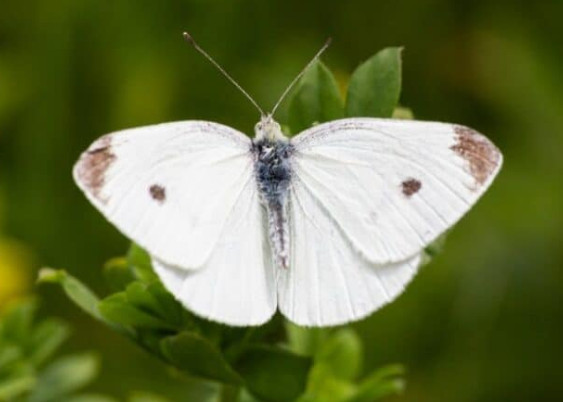
Exploring the World of Black and White Butterflies
Natural life is diverse and creates richness in the insect world, including beautiful black and white butterflies. Worldwide, there are at least 22 distinct species of black and white butterflies, each with its own unique shape and color. They exist in a wide range of environments and are an important part of the ecosystem.
These butterflies can be found everywhere, from fields to forests and even in cold environments like Alaska and northwest Canada. Although they have different colors and shapes, they all have their own beauty and are important in the process of pollinating plants and maintaining natural environmental balance.
This article has introduced to you some interesting black and white butterflies, emphasizing the diversity and unique beauty of the natural world. Let’s continue to discover and protect these species so they can survive into the future and enrich the world around us.

